Winnebago eRV2 electric RV comes with 108 miles of range
Winnebago unveiled its first all-electric RV and the first thing everyone is talking about is its range. Since the eRV2 is based on the Ford e-Transit, we get the standard powertrain with the standard battery good enough for 108 miles (or 174 km) of driving in perfect conditions. Is that enough for an RV?
Before we answer that, let’s look at the van itself. The eRV2 is based on the standard wheelbase e-Transit which gives the interior enough room for the rear dinette setup with the kitchenette on the side and wet room behind the driver seat. The dinette converts into a large double bed and there’s plenty of storage for two people. No issues here, it’s a Winnebago at its best.

The company louds the use of recycled materials and it’s great to see that, especially in an electric RV that tries to push its green credentials - every little bit helps. The driver and passenger seat covers are made from plant-based fabric, there is biodegradable acrylic used in the kitchen and even the lights are RGB - you can change the color of them to reduce light pollution. It’s really helpful to run red lights at night, if you ever tried you’ll never want to use white light again.
The van comes with 900W worth of solar panels and a custom made house battery bank. Instead of the usual gel or lithium-ion batteries sitting under the bed, Winnebago enlisted the help of Lithonics Battery and uses its IonBlade batteries. These fit neatly under the floor without much impact on the interior space. The total capacity is 15,000 Wh at 48V which is enough for a few days of electricity in bad weather.
Why mention bad weather? Because the 900W solar will keep those batteries topped up if the sun is out pretty much forever. Winnebago claims the eRV2 can go boondocking for up to 7 days. The limitation is not its house battery but the water tanks - the van has enough capacity of fresh, black and gray water to stay out in the wild for up to a week with two people on board.
That brings us back to its electric range. In reality the van will struggle to get to 100 miles and we all know that. How far into the wildness can you get with that? Not far at all. 50 miles one way is not much, the eRV2 will rely heavily on charging infrastructure, but stopping every 70 or 80 miles to recharge, when you’re on a cross country trip, will get tiring. It’s a good thing there’s a kitchen in the back and a comfortable bed.
The eRV2 is an important RV for Winnebago. It may not have a continent busting range but it actually is zero-emissions RV. Yes, yes - zero emissions at source, there are emissions during manufacturing and all but the point is - while you’re out there, camping in the wild, you don’t add any pollution to your surroundings. Once you manage to get to the spot, you can stay for a few days, knowing the only impact you leave behind are good memories.

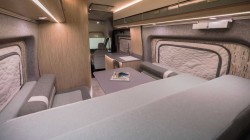
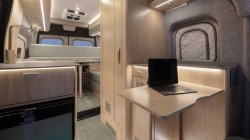
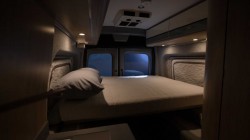
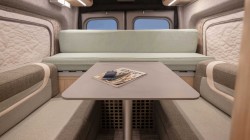
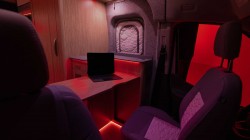


Facebook
Twitter
Instagram
RSS
Settings
Log in I forgot my password Sign up